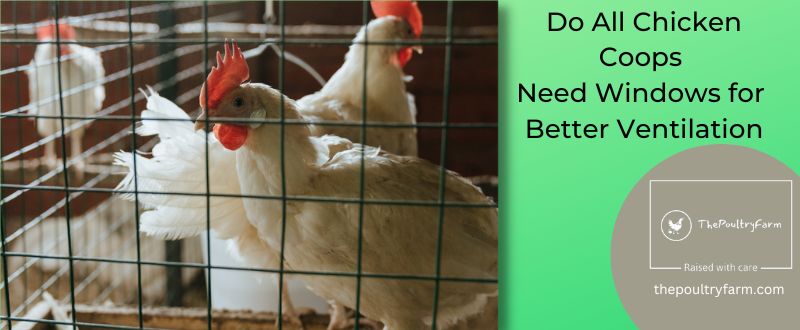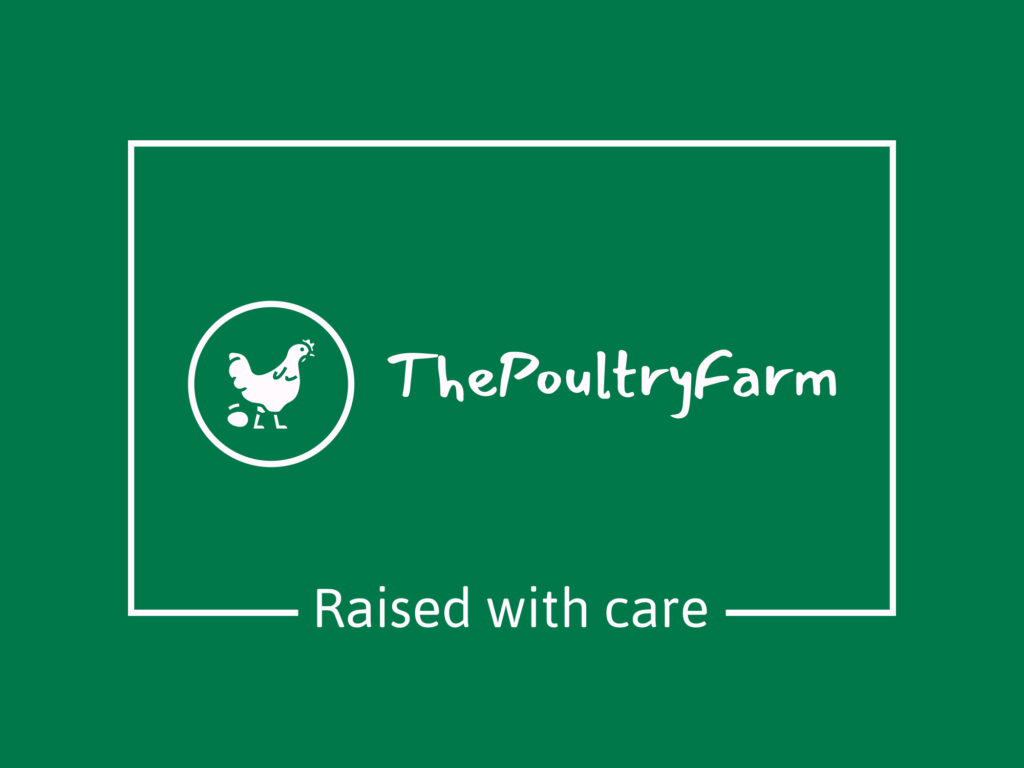
Introduction
The Short answer to “Do the chicken coops need windows?” is YES. Windows for chicken coops are a bizarre thing that divides keepers, with some insisting on having more than one window for the coop to be airy and others insisting on just one small window is sufficient.
Chicken coops require at least one window to let in light. Chickens are sensitive to light and their laying cycles are determined by having enough hours of daylight. My preference is to have the windows facing the sun to get the chickens up as early as feasible.
A lesson I have learned years ago is to not include windows in the plan to use them for ventilation. Windows are all about light. Ventilation should be considered a separate matter.
Do chicken coops need windows?
Windows should be designed in such a way and location that sunlight will be able to penetrate every inch of the floor area at a certain time of the daytime. Although we all recognize the value of sunshine, however, we may not know the significance of it is in the health of chickens.
If we consider that diseases and vermin thrive in the absence of sunlight and that the remedial measures can be difficult and costly, we’ll integrate into our building plans every avenue that can let sunlight in.
A lot of nest boxes are probably excessive unless you have a huge coop. It is possible to have excessive windows inside your henhouse and your chickens might not be keen on using nest boxes if it is bright inside.
If you also are surrounded by windows, for roosting, the time could be a slow process with birds moving up and down from their perches, rather than going to rest.
Do more windows mean better airflow?
You can, however, shouldn’t be planning to use windows solely for light or ventilation. It is still necessary to have ventilation even in the middle of winter, especially when it’s cold and windows are closed.
If you live in an area where it gets cold, or in darkness for long durations, you’ll have to install lights along with windows. are useless at this time.
Chickens have a sensitive respiratory system, so it’s vital that your coop is equipped with distinct and adequately controlled ventilation in order to ensure that respiratory ailments are not a problem among your chickens.
What size & type should the chicken coop window be?
Chickens love dark, secluded places to nest, so windows with small openings aren’t necessarily a concern. A well-lit coop at night or at the end of the day, when chickens are preparing to roost can cause some issues.
The window of a chicken coop should at a minimum be 2 feet tall by 2 feet long (or 2 square feet) and allow enough light to the coop that you can read a newspaper through. Larger hen houses will require more windows or smaller ones.
Keep in mind that the more windows you have, the more difficult it will be to install them, as it will take longer and the more materials you’ll require and the more time the process will be.
Much like the construction of chicken coops and coops, simplicity is the way to ensure satisfied chickens as well as happy chicken keepers.
Coop windows are likely to be too big or small. If you’re concerned that you might not have enough room for windows Add a second window but make sure to put in a shutter that covers the window if required.
Plexiglass
Plexiglass is basically a transparent plastic sheet made of polycarbonate. It’s transparent, so it lets in lots of light. It’s also economical, sturdy, and won’t easily break.
The downside of glass is that it doesn’t appear as appealing as ordinary glass…not so much that chickens are able to tell, But YOU may not be happy with its less appealing appearance. If you’re planning to put your coop on a farm away from the people who are looking at it, it might not be a problem. However, if it’s within your yard, you might think about glass. It’s really an issue of personal preference.
Fixed Windows
As the name suggests, fixed windows are not able to open and don’t have screens. They’re similar to plexiglass this way, however, they are more attractive to the eyes.
They’ll cost you more than plexiglass, however, they are considerably less expensive than double-hung or casement windows. Since they do not open, you’ll need to include vents in your coop for more air circulation. At a minimum, one vent must be built into a different wall in your coop, but more is better. Between the vent(s) and the door for your chicken, it is essential to have adequate airflow.
Casement
Casement windows are windows that open out to the exterior of the house like doors open. They are also widespread in houses and can be used in your chicken coop.
What kind of window would be the best choice for a coop?
Simple is the best choice, and it can be used in any weather. All my coops are built around sheds, which is why my coops are mostly common-size plastic panel that fits within a basic framework on the wall.
What kind of material should the coop windows be made of?
This can vary based on the location you are in and what animals you must be sure to keep away from.
Coop windows typically a wooden frame, with either a glass or plastic panel that is inserted into the hole. The reason that most of them are similar is that they are simple to make, inexpensive, easy to clean, and can do the job efficiently.
For hen house windows, you can choose from four different windows in coops:
- Clear transparent, red, or clear plastic sheet. Plastic can be easily cut or purchased in pre-cut sizes durable and simple to set up. It is also simple to wash and does not decay. A plastic sheet in red is great for poultry because it lets the right light in the chicken coop.
- Plexiglas.
- Glass.
- Mesh is a mesh, weld mesh, or cloth.
Windows or Vents?
A lot of people choose to use vents rather than windows. Vents allow air circulation as well as allow sunlight, they’re basically similar things. It is important to ensure that, whether you install vents or windows, let one square foot of air circulation for each bird that is in the coop.
What should the chicken coop’s windows be composed of?
Window openings should be secured completely with galvanized hardware cloth. This should include mesh openings that are 1/2 inch or less.
This way, the windows or vents will let in the air and protect the co-op from pests and predators.
With a great layout, the windows of a chicken coop may have the same qualities and features as windows at home:
- Screen them to keep pests out
- By covering them with glass or Plexiglas lets in light, but akeep rain and cold out in the worst weather
- They can be open to allow ventilation and air circulation during warm weather.
- They will have some method to make them darker to block unwanted sunlight.
A lot of people choose to protect their windows in the chicken coop especially during the long days of summer to prevent the chickens from awakening up too early, and to allow them to rest in the evenings.
If you think of the windows in a home usually, they’re equipped with one pane made of glass. They also have a screen and a blind or curtain which means they can perform all these things.
Where are the windows best placed in the Chicken coop?
The location of windows can vary greatly, based on the layout and layout of your coop. It’s recommended to keep the bulk of your ventilation located on the wall, over but away from your roost. This way windows can let in air and light, and chickens don’t sleep in the cold air. Windows are best placed on opposite walls to facilitate the flow of air instead of all being set on one wall in the chicken coop. In hot weather, it’s a great idea to include air circulation in the lower part of the wall. This will allow airflow and keep the coop from becoming too hot.
Coop windows to withstand extreme cold:
For extremely cold areas or in areas where insulation is required, double-glazing windows are much less energy efficient than single glazing. One of the best options I’ve seen for windows in coops in extremely cold or frozen locations is the plastic mold which is specifically designed for greenhouses.
Coop Windows to suit extremely warm environments:
For areas that are extremely hot, it’s recommended to use a hardware mesh or cloth, and include shutters you can shut to block the opening if you want to.
Conclusion
Chicken coops should have windows since chickens require fresh air and light. The size they must be, as well as where they should be put, is contingent depending on your chickens’ size, the layout in the interior of the coop, and the climate you reside in. You must ensure that you have airflow and ventilation so that your chickens can flourish.
I am passionate about chickens and how best to raise a healthy flock. I have been raising chickens for over 10 years now, and I am always looking for new and innovative ways to keep my chickens happy and healthy. In addition to keeping my own flock, I also putting reviews on the essential products that are required to keep Chicken happy. I hope to help as many people as possible learn how to properly care for their chickens!
Leave a Reply
